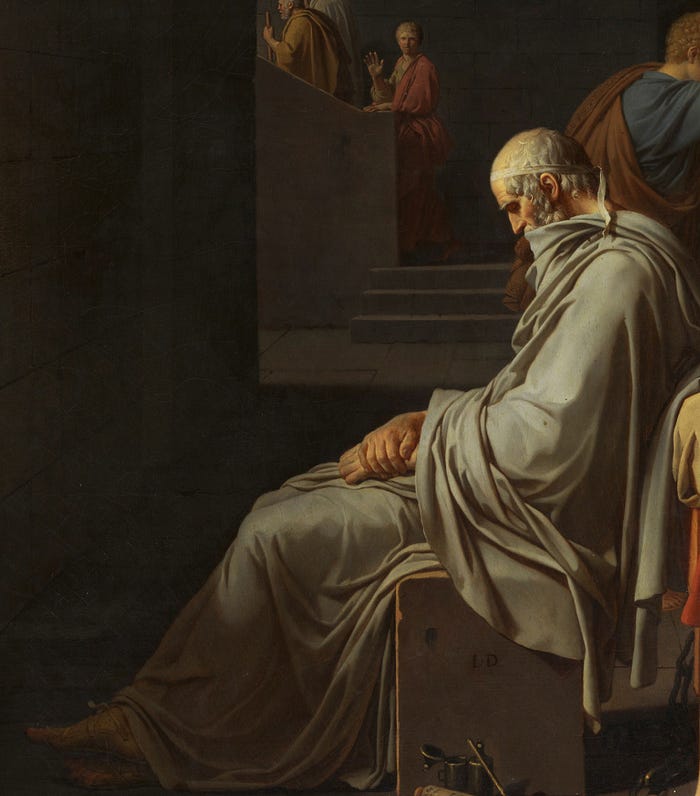The Death of Socrates — Art Criticism

Artist: Jacques-Louis David
Date: 1787
Movement: Neoclassicism
Medium: Oil on Canvas
Dimension: 129.5 x 196.2 cm
Location: Metropolitan Museum of Art, New York
Socrates was found guilty and given the option of renouncing his convictions or drinking the poison hemlock. He was accused of impiety and of corrupting young people with his teaching by the Athenian government. Socrates then died willingly because of the ideals he held dear. Here he motions toward the cup, points to the heavens, and speaks about the immortality of the soul. The image has been described as the most perfect neoclassical statement of David, with its stoic theme.

I first noticed the upper right horizontal line of light in this painting. This line draws the eyes of the spectator through the painting, which helps one to see all of the agony of the followers and supporters of Socrates. That being said, the contrast of light and dark color shows a strong emotion of anguish and disbelief in the painting, shown through the facial expressions of the men. If anyone were to look at this painting without any context, they would probably realize that this painting captures a significant event that will change the lives of the men present.

The viewer’s eyes are drawn to Socrates because Socrates is so much lighter than the rest of the men in the painting. Also, the man second on the right has an expression that really caught my eye. However, I only noticed the man because of the way the light shines on Socrates. In comparison, there is an eerie feeling on the left side of the painting. I’m not sure if it’s because I know what’s going on in the photograph, or if it’s because the men and the prison have darker color shades. It’s almost like foreshadowing what is going to happen.
The last feature of the painting on which I want to concentrate is the line. The lines are very sharp and simple, since this painting was done long before the intense abstract period. I would suggest that in this painting, there is a mixture of geometric and organic shapes that generate the requisite tension to express the painting’s emotions. There are no harsh lines, however, which stand out to me.

David consulted Plato’s “Phaedo” and a number of sources, including Diderot’s treatise on dramatic poetry and the works of the poet André Chenier. According to the English novelist Richardson, Plato’s pose, the figure seated in profile at the foot of the bed (who was not actually present at the scene), was inspired. The printmaker and publisher John Boydell, writing to Sir Joshua Reynolds, called The Death of Socrates “the greatest artistic effort since the Sistine Chapel and the Stanze of Raphael,” adding that the painting “would have honoured Athens at the time of Pericles.
Source: Wikimedia
